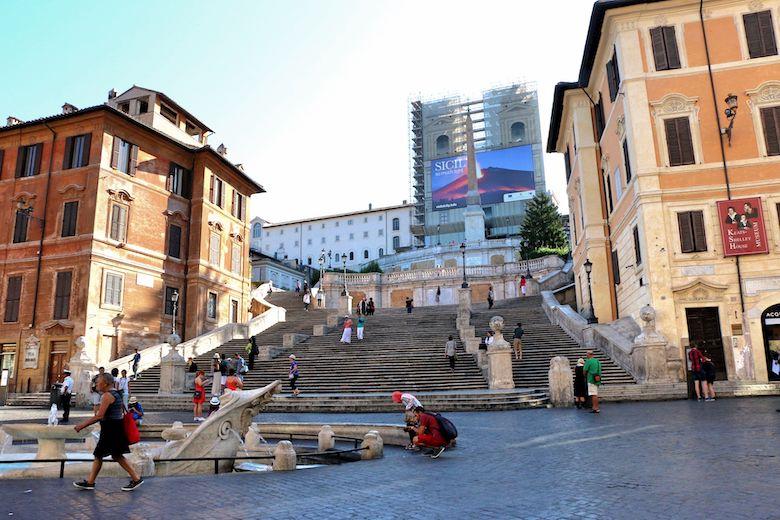
Any large unfamiliar city can appear overwhelming – this is particularly true of Rome, with plenty of history, culture, and food to experience. To best prepare you for your trip, The Roman Guy has a rundown of what you can expect on your first trip to the Eternal City.
FROM THE AIRPORT
There are two airports in Rome including, Ciampino and Fiumicino, with both located roughly the same distance from the city center. From Fiumicino, you have the option of traveling by bus or train, but from Ciampino, the easiest option is the bus. Both will take you to Termini Station, the main station in Rome. From Termini Station, it’s best to catch the metro, bus, or taxi to wherever you desire. The bus costs between €6-7 depending on the airport and the coach company. The train is about €15 for the express train or €8 for the local train.
GETTING AROUND THE CITY
Public transport is not Rome’s strongest asset and can be confusing to navigate. If possible, try to book accommodations in the historic center so you can easily walk to Rome’s main attractions. Otherwise, find accommodations by a metro stop. There are three metro lines, A, B, & C, which run frequently. Buses are harder to navigate, but can take you to most places if the metro is not an option. We suggest downloading an app such as Citymapper to help you.
You can buy tickets for the metro at any station including cheaper tickets for 24 or 48 hours, however, they are cash only. For bus tickets, you must buy a €1.50 ticket before boarding, usually from a tobacconist/café, and have your ticket validated when you board.
Taxis are everywhere, but expensive. Uber only offers its Uber Black luxury option, which can be costly during your stay. MyTaxi is a good substitute for Uber, or if you want to schedule your transportation in advance, book a private transfer.
CASH OR CREDIT?
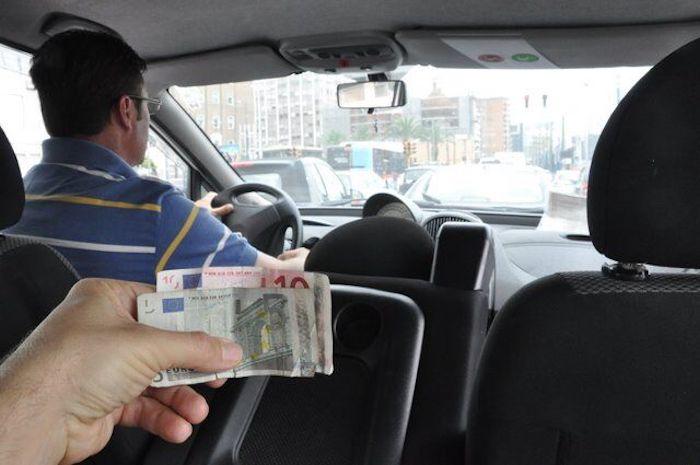
The currency in Italy is the Euro. We recommend carrying a reasonable amount of cash with you at all times to avoid getting stuck. In general, most restaurants will allow you to pay with a credit card, as will large shops and tourist attractions, but for drinks, coffees, transport tickets and small items, cards often aren’t accepted. Tipping isn’t particularly expected in Italy, but ten percent left in cash for the waiter is always appreciated.
SEASONAL PACKING TIPS
Winter
The winter months include November through February and are relatively chilly, with temperatures ranging between 30 and 60 degrees fahrenheit. We recommend packing a heavy coat, scarf, gloves, and layering options if you’re planning on spending a majority of your time exploring the city and it’s attractions.
Summer
Summer months include May through September and can be extremely hot with temperatures topping 80+ degrees fahrenheit. Although Italians generally don’t wear short shorts or minidresses, no matter how hot it gets, it’s understandable that tourists do. The best items to keep cool while fitting in with locals are loose-fitting cotton clothes. Remember, St. Peter’s Basilica in the Vatican and many other religious attractions require shoulders and knees to be covered at all times.
With respect to the temperature, autumn and spring are the best seasons to visit Rome specifically to avoid extreme heat or cold. There are fewer tourists and pleasant temperatures, usually in the mid to high 60s.
HOW TO EAT AND DRINK LIKE AN ITALIAN
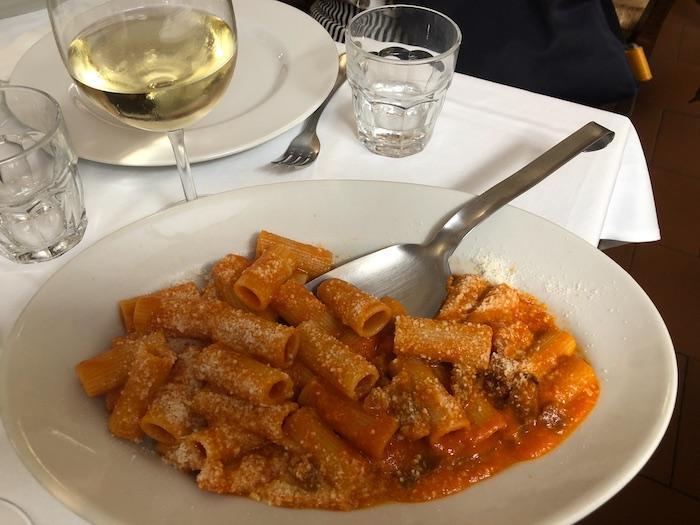
Food is often one of the top reasons why tourists travel to Italy. Every region serves amazing, fresh, handmade dishes. A traditional Italian meal is comprised of: antipasto (starter), primo (pasta) secondo (meat and vegetables), dolci (dessert), followed by coffee and liquors. These are typically the headings that you’ll find on a menu, so it’s best to have an idea of what they mean.
Be prepared for a different Italian experience than what you are used to in America. For example, a common American-Italian dish is spaghetti and meatballs. Yes, spaghetti and meatballs exist in Italy, but they are not eaten together. Spaghetti is a primo dish, while meatballs are a secondo dish and eaten with ‘contorni’ like roasted potatoes and vegetables.
Other local foods to sample in Rome include: saltimbocca, veal wrapped in parma ham and sage; carciofi alla romana (fried artichoke) e alla giudia (cooked artichoke); coda alla vaccinara, oxtail with tomato sauce, herbs, pine nuts, raisins, and bitter cocoa; and suppli, fried rice balls stuffed with mozzarella, a classic Roman street food.
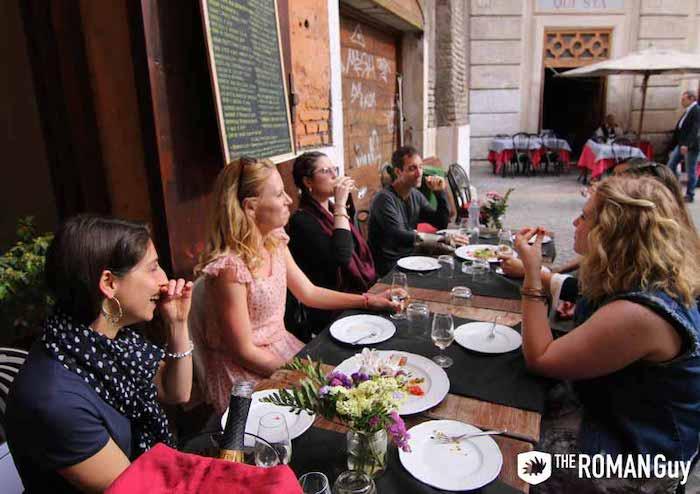
Rome caters to a vast tourist population, but that doesn’t mean there aren’t good places to eat in the city center. For a more authentic experience, avoid restaurants within close proximity of a tourist attraction, menus that include pictures of the food, or restaurants with staff outside trying to hustle you in. Look for smaller eateries where the majority of customers are speaking Italian and there are fewer items on the menu. We also recommend having a local show you around their favorite spots. Don’t expect particularly friendly wait staff. Some of the best food in Rome is flung at you without so much as a ‘hello’, but it’s guaranteed to delight your palate.
Coffee in Italy
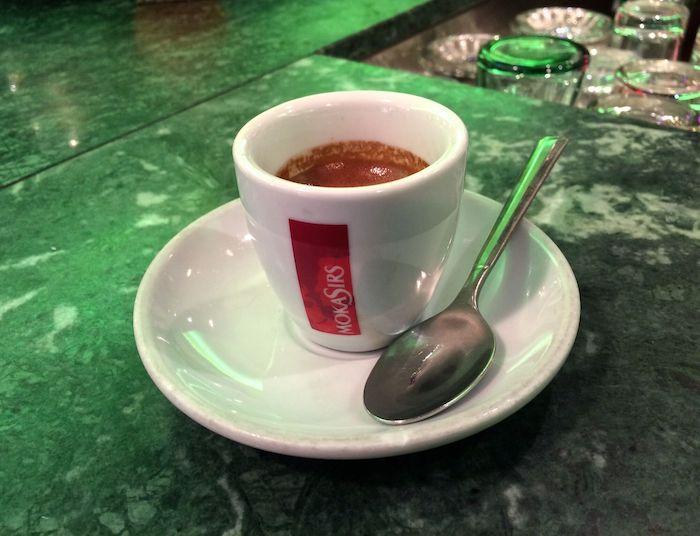
Italians take their coffee culture very seriously, with just as many rules as there are for food. For example, if you ask for a coffee – ‘un café’ – you will receive an espresso, which you drink standing at the bar. Italians drink cappuccino, but only in the mornings with a pastry. Ordering a cappuccino after 11:00 AM is frowned upon, and downright forbidden if requested directly after a meal. If you stand and have your coffee, prices range from €1 for an espresso and €1.20 for a cappuccino, however, be prepared to pay a little more if you want to sit. Usually the table cost should be roughly double the ‘bar’ cost.
Meal Times
Italians tend to eat much later than Americans with many of the best restaurants opening on or around 7.30 PM. Italians eat slowly and take more pleasure in their food. Meals are a celebrated and elaborate affair, especially on Sundays where lunch can last up to three hours.
Rome Water Fountains
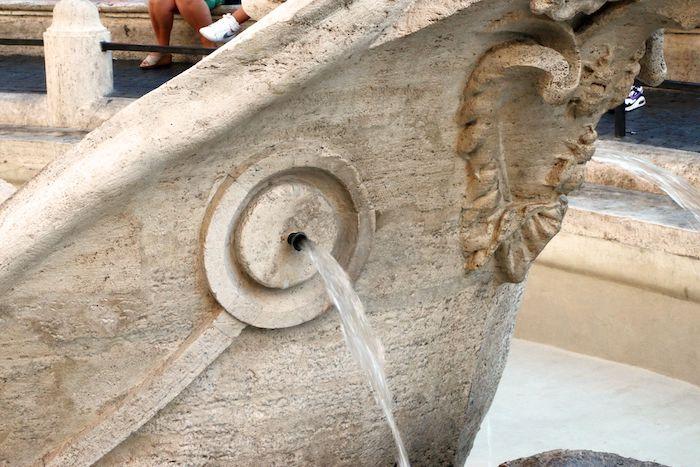
One of the best things about Rome are the plethora of fountains peppered throughout the city. There’s no need to purchase water. Instead, carry a refillable water bottle, and fill it up whenever you see a fountain. There’s an app called I Nasoni di Roma to help you locate a fountain – if you’re traveling in the summer, this is a helpful app!

